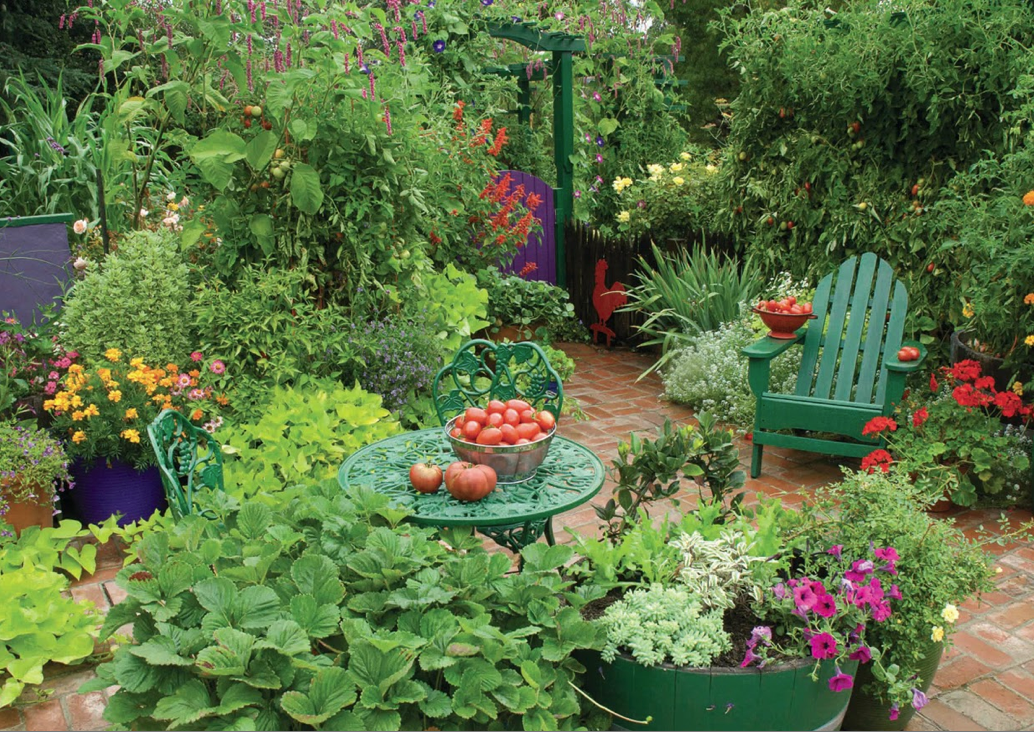By Annie Spiegelman, the Dirt Diva
Grow Your Own
I grew up in New York City, in a tall apartment building, yet somehow I can now grow organic fruits and vegetables. And so can the teenagers I work with in school gardens. If we can do it, trust me, ANYONE can! It’s not rocket science. All you need is sunshine and healthy soil (full of life; compost). When you grow your own food organically you’ll be eliminating pesticides and herbicides that are ubiquitously used in commercially grown food. Visit whatsonmyfood.org to see how many pesticides are sprayed on your supermarket fruits and vegetables. That should scare you into growing your own. Check out Rosalind Creasy’s Edible Landscaping, for tips and ideas. Bon appétit!
Learn How to Sheet Mulch
Most avid gardeners amend their vegetable plot in the fall to get it ready for spring. This is usually done by planting cover crops throughout the winter or by sheet mulching: Composting with layers. Sheet mulching can also be done over a lawn or a section of a lawn that you want to turn into a Victory Garden (planting edibles and ornamentals). Lose the lawn! Lawns are out. Food is in! To sheet mulch, weed the section you’re going to use or mow it down. Next, lay four layers of newspaper on top (black and white only). You could also use one layer of cardboard instead. Cover the newspaper with 2 inches of compost. Then cover it all with 3-6 inches of straw or wood chips. This will kill the weeds and grass and rile up the earthworms to get off their behinds and get busy tilling. Water periodically if there’s no rain. By late spring or summer, organic matter will be decomposed and ready for you to start planting. For a full sheet mulch demonstration, visit bayfriendlycoalition.org.
Choose Natives
Once native plants are established, they carry on without a chirp. Not one complaint. They just want to hang by your side in your yard and make your life easier. They will help conserve your time, energy and money. How’s that for motivation? Many native plants are drought-tolerant as well. Once established, they survive on rainfall and little additional watering in the summer. Most native plants even perform better without fertilizer, and many are pest-resistant and rich in nectar so they invite birds, butterflies and beneficial bugs to your side of town. Most need minimal care and need pruning only once a year, usually in the fall before they go dormant. Native plants essentially take care of themselves. They’re not needy. They’re laid-back, smart, good-looking and independent. In other words, they’re the perfect date.
Use Compost and Mulch
Unfortunately, many unknowing gardeners feed their plants with a mined, salty, chemical, fast-acting fertilizer that can deplete the soil, burn young seedlings and earthworms to a crisp, and turn your plants into speed junkies. You don’t want hyperactive and sugar-addicted plants. (Aren’t hyperactive and sugar-addicted children enough?) Stop being an enabler! You want to gently bore your plants to tears with a slow-release amendment such as compost. Compost has exactly what plants need: Water, air, nutrients and bulk, the last being something most fertilizers lack. Compost improves your soil texture and structure, supplies and helps retain nutrients, provides moisture and aeration, helps control weeds and reduces the need to pollute your zip code with chemical fertilizers and pesticides. Make your own or purchase from a local source such as Point Reyes Compost Co. (prcompostco.com), available at local Marin nurseries or Local Veggie Hero Mix at American Soil & Stone in San Rafael (americansoil.com).
Choose Safer Products
A healthy garden is home to a variety of native and flowering plants, which in turn attract a wide variety of beneficial insects who enjoy lunching on the neighborhood pests. How do we invite beneficial insects and a bunch of their friends to come to our homes to eat and hang out like starving teenagers? To start, reduce or eliminate all broad-spectrum pesticides, herbicides and fungicides. Pesticides eliminate not only the bad insects, but kill the beneficial ones, too. You’re now on an endless cycle of wasting money; weakening your plants; killing off the bird, butterfly, and bee populations; depleting your soil; and polluting the neighborhood’s groundwater. That’s not gardening. That’s lunacy. Today there are 16,000 pesticide products registered with the EPA. Besides shoes, do we really need 16,000 of anything? Visit ourwaterourworld.org for recommendations on safer products.
Speak up for REAL food
Ever wonder why we are so chubby in America? We have outdated federal food and farm policies that make real food cost more while subsidizing raw materials like corn and soy. Those materials are turned into processed food by adding sugar, salt, fat and preservatives, etc. The U.S. Farm Bill refers to whole fresh foods (tomatoes, apples, broccoli, greens) as “specialty crops.” What is so special about broccoli? Right? (Now I’m going to get hate mail from the Broccoli Coalition … )
It’s time to become a food activist. We used to be tagged as ‘elitist’—but those days are over. There is nothing elitist about wanting to eat safe, clean food, and striving to create a more equitable system of food production, distribution and consumption. Read Ali Berlow’s The Food Activist Handbook: Big & Small Things You Can Do to Help Provide Fresh, Healthy Food For Your Community. And make 2016 the year you go to a Farmers’ Market to meet your local farmers and support them. They are our local heroes dealing with climate changes, water shortages and pesticide drift. Learn more about their miraculous work at marinorganic.org.








